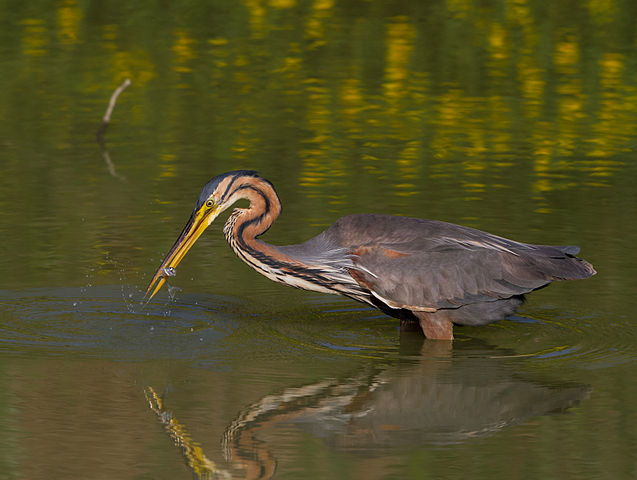
species of the week #11- purple heron
The purple-heron is easily recognizable by the strong black-red-brown drawing of head and neck; the purple-shimmer on the upper side, to recognize only from near, gives it its name. In Germany, there are still isolated hatcheries in Southern Germany, with what the hatcheries at the Rhineland-Palatinate upper Rhine (with sporadic settlements in Hessen) represent the most northern occurrences.
| Distribution status | Extremely rare |
| Remaining occurrences | 15 – 25 breeding pairs |
| Last sighting in Rhineland-Palatinate | current |
| Habitat | Dense reed beds in floodplains |
| Threat | Decreasing water levels, construction measures, destruction/loss of reed areas; eutrophication, overhead lines |
The purple-heron lives in extensive, flooded reed and Röhrichtdickichte and builds its nests preferably in the bent stalks of alto-reed, but also in mixed stands from reed and other shore-vegetation (alders, willows). In Rhineland-Palatinate, it is observed mainly at large-area disturbance-poor and food-rich altrheinarms and former clay-pits (Mechtersheim). Its food consists mainly of fish up to about 10 cm in size, but also of insects, amphibians, reptiles, small mammals, molluscs and crustaceans. Purple herons can reach an age of at least 25 years.
Politically necessary:
– Better protection in case of conflicts between bird sanctuaries and construction projects near the banks, e.g. new construction of the Rhine bridge Wörth-Karlsruhe
– Protection of the remaining wetlands in the brood and hibernation area; New creation of breeding grounds
– Improvement of the water status
Picture: By Pierre Dalous – Own work, CC BY-SA 3.0, https://commons.wikimedia.org/w/index.php?curid=20714377
